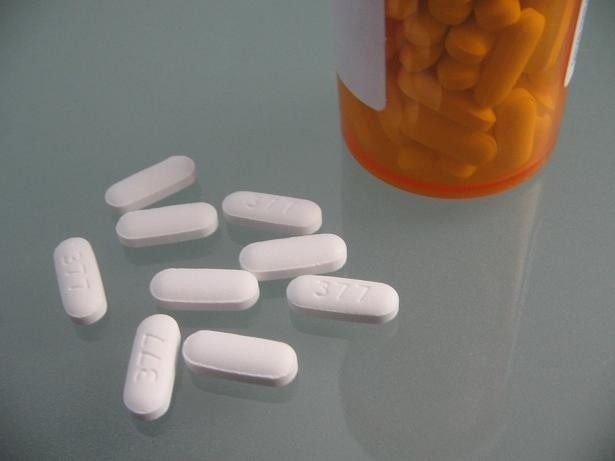Tramadol is often prescribed as a pain reliever for moderate to severe pain, usually incurred after an injury or surgery. It is classified as an opiate drug, which puts it in the same family as morphine, oxycodone, and hydrocodone.
While opiates are widely prescribed as pain relievers, they carry a risk of addiction. The Drug Enforcement Administration (DEA) lists this drug as a Schedule IV controlled substance. In other words, it has legitimate medical uses but has a mild risk for addiction.
How can I become addicted to this drug?
Often, addiction to Tramadol comes through improper use. If your doctor prescribed this drug, it’s important to use it as prescribed. Do not adjust your dose on your own without consulting your doctor first.
If you feel that the drug is no longer as effective as before, talk to your doctor first. Many cases of addiction have occurred because patients took higher doses on their own.
If you are addicted to this drug, your behavior will change. These are the usual signs of an addiction:
- Acquiring extra prescriptions from different doctors (also called “doctor shopping”)
- Getting into financial trouble because of drug use
- Isolating yourself from concerned family members and friends
- Poor performance at work or school because of drug use
- Not being able to function normally without the drug
- Being unable to quit despite knowing the negative effects of the drug
Quitting is particularly difficult because of withdrawal symptoms. These include:
- Anxiety
- Mood swings
- Depression
- Confusion
- Agitation
- Vomiting
- Loss of appetite
- Nausea
- Sweating
- Blurred vision
- Abdominal cramps
- Muscle pains
- Nightmares
- Diarrhea
Anytime you try to stop using the drug on your own, any of these withdrawal symptoms will show up. Some of them can get so bad that your only recourse would be to take the drug again.
If you want to stop using this drug, the best thing to do is to seek professional help.
What should I expect during Tramadol rehab?

Drug rehab uses a variety of treatments to combat addiction. The first step is often medically-assisted detox. This is followed by a range of behavioral treatments designed to address the psychological effects of addiction.
Medically assisted detox
Detox is the first phase of drug rehab. Here, the goal is to eliminate all traces of Tramadol from your body. Medical professionals will administer the treatment and watch over you through the entire process.
Doctors will often implement a gradual “tapering” schedule to make the process safer and more effective. In other words, they will let you decrease your dose slowly over several days. Eventually, you will be able to tolerate not taking the drug at all.
Medical professionals often advise against quitting a drug “cold turkey.” Abruptly stopping your intake of the drug may trigger more serious withdrawal symptoms. Some of these may put your health in danger. With that, the safest way to get off any drug addiction is through tapering.
With a carefully controlled detox schedule, your chances of developing unpleasant withdrawal symptoms are lower. But it’s still possible to experience withdrawal. When you do, and it becomes uncomfortable, doctors will give you medications such as:
- Methadone
- Buprenorphine
- Naltrexone
- Lofexidine
As you take these medications, you will more easily manage your withdrawal symptoms. In turn, you can go through the detox process more safely and comfortably.
Behavioral therapies

After detox comes the second phase of drug rehab. You will undergo a range of behavioral therapies, such as:
- Motivational interviewing
- Contingency management
- Cognitive behavioral therapy (CBT)
- Dialectical behavior therapy (DBT)
These therapies aim to address any psychological damage done by the drug addiction. You will learn the root causes of your addiction as well as the skills you need to live sober.
CBT, for example, teaches you the thought patterns that lead to undesirable behaviors like drug use. Your therapist will teach you how to change your thoughts, which in turn will lead to the right behaviors. After CBT, you will be able to actively avoid using drugs and opt for healthier coping strategies instead.
Some therapies also rely on incentives to keep you on track to recovery. Contingency management, for example, does this by offering vouchers and rewards if you can keep yourself drug free for a long time. The longer you keep yourself sober, the greater your incentives become. But if you fail to keep sober for a specified period, you will lose the incentives. You’re back to square one and have to earn your way to those rewards again.
Outpatient vs. inpatient rehab
You can receive treatment in either of two ways. If you’re enrolled in an outpatient rehab program, you only have to go to the rehab center during your therapy sessions. After each one is done, you are free to go home.
Outpatient rehab is best if you cannot take an extended leave from your responsibilities at home, work, or school. You can receive treatment while going through your normal routines. If your case of addiction is mild, outpatient rehab can work for you.
But if you have a more severe case of addiction, you will have to enroll in an inpatient rehab program. This way, you can focus all your time and attention on your recovery. It’s called “inpatient” because you have to live inside a rehab facility for the entire length of your rehab program. You’ll spend anywhere between 30 to 90 days in the facility, depending on your needs.
Each day in a rehab center is designed to maximize your recovery. Your bedtime, wakeup time, and mealtimes are regularly scheduled to help you build a healthy routine. Throughout the day, you will go through several therapy sessions. There are one-on-one sessions with therapists and group sessions as well.
You may also be asked to participate in support groups, where you and fellow patients share your experiences. You can learn from each other and build community with others who share the same goals of recovery.